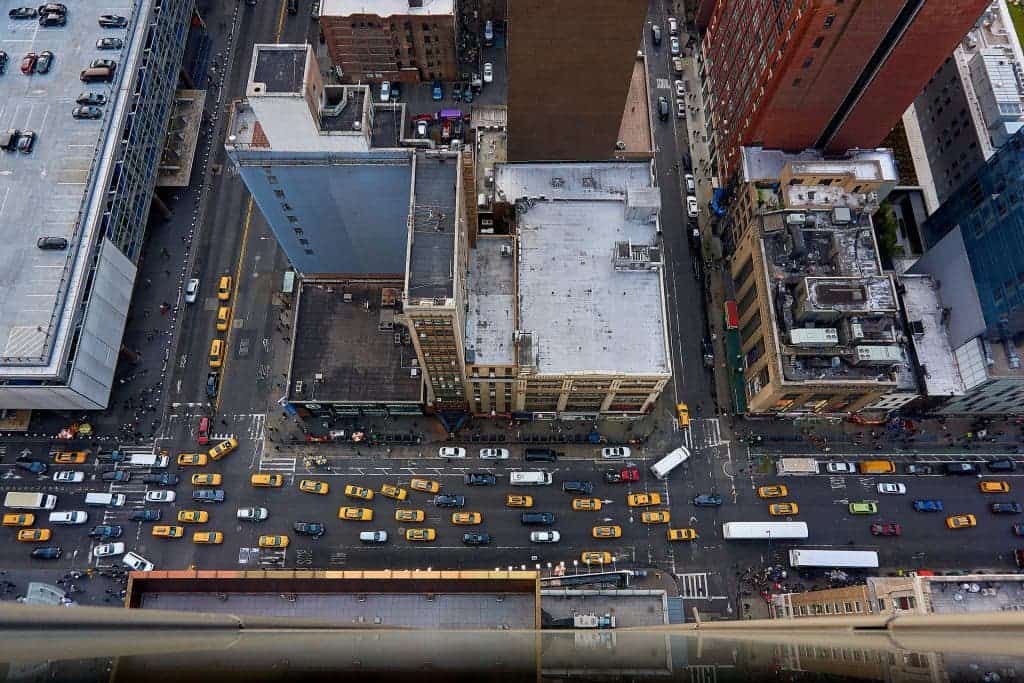If we want cities to remain viable in the future, we’ll have to rethink transportation and car use, a new paper warns.

Researchers at the University College London (UCL) trying to understand the city of the future say it doesn’t mix well with automobiles. If current trends continue, they explain, cities will eventually be swamped by cars. This will drain ever-more resources on infrastructure, and waste ever-more of our time through busy, slow commutes.
Cars will still be used, undoubtedly, but the authors recommend that walking or cycling should be promoted instead of these for short, local trips. Public transport networks should be improved and encouraged for longer journeys, where possible. In order to keep cities livable in the future, the team concludes, cars should only be used for special occasions or emergencies.
Too many
“The city of the future, with millions of people, cannot be constructed around cars and their expensive infrastructure,” explains lead author Dr. Rafael Prieto Curiel. In a few decades, we will have cities with 40 or 50 million inhabitants, and these could resemble car parks with 40 or 50 million cars.”
“The idea that we need cars comes from a very polluting industry and very expensive marketing.”
The results are based on a mathematical framework that models the use of cars in a city. For the purposes of this study, the model assumed that citizens would either use a car on a daily basis or used public transport. What the model tracked was how long (in terms of time) each journey would take, as time was considered to be the main cost individuals consider when deciding on how to travel. The baseline for the model was a city in which there is no personal car traffic, just cycling, walking, and public transport.
On the other extreme, the model considered a city with 50 million inhabitants and 50 million cars, where all residents would commute to work with their own vehicle in order to save up on time. This virtual city, quite understandably, saw much higher levels of congestion and required more spending on infrastructure such as avenues, bridges, and car parks in order to accommodate all that traffic.
Surprisingly however, while the people in this city opted to drive to work to get there sooner, they actually lost more time than those in other scenarios. While driving is the fastest solution for individuals, when everybody opted for it, commuting times were the longest seen in any of the simulated cities. The team explains that this comes down to traffic — all those cars on the road create jams and slow everybody down significantly.
Where to go from here — and how?
The paper offers reliable evidence that better public transport infrastructure would improve the travel time for citizens, as more of them would opt for public transport over personal vehicles. It also shows that even without any improvements in public transport, time costs for commuters and citizens travelling through the city can be reduced by lowering the number of people driving at any single time.
While they don’t advocate for this solution, the authors give a scenario where a group of people is allowed to drive one week, but must use other transportation options the next one, such as ride-sharing or public transport. Average commuting times could be reduced by up to 25% (depending on the size of the group) for all citizens due to reduced car traffic, less congestion, and faster transportation throughout the city on average.
However, the authors underline that decreasing car use in cities hinges on giving people efficient travel alternatives, as well as local shops and services (so as to reduce demand for transport in the first place). Interventions such as congestion charges, tolls, and driving and parking controls can help discourage car use, but unless people have alternatives to pick from, and are informed as to the local costs of car use, we can’t reasonably expect them to give up the use of their cars. Some cities have tried simply banning some vehicles based on their license plate, such as Mexico City, but this backfired as residents purchased older, cheaper, and more polluting cars to get around the ban.
Not making any changes isn’t a viable option, either. They note that car production is fast increasing, and has actually outstripped population growth. In 2019, 80 million cars were produced, while the population increased by 78 million worldwide. Pollution is a big concern: globally, car manufacturing (including electric vehicles) contributes 4% of total carbon dioxide emissions. Energy use, be it petrol, diesel, or electricity, also generates pollution (right under our noses, in the case of combustion engines) and added costs. Material costs related to the construction and maintenance of infrastructure required by these cars, as well as time lost in traffic due to congestion, are also added costs most people don’t consider.
“Currently, much of the land in cities is dedicated to cars. If our goal is to have more liveable and sustainable cities, then we must take part of this land and allocate it to alternative modes of transportation: walking, cycling, and public transport,” says co-author Dr. Humberto González Ramírez from the Université Gustave Eiffel.
Such research is actually very important, as sustainable transportation is a key objective for many large cities as part of one of the UN’s Sustainable Development Goals. This model, the authors explain, can easily be adapted to other cities around the world, although it is particularly useful for locales where the majority of travel (>90%) is done by car, which is most common for cities in the US.
The paper “A paradox of traffic and extra cars in a city as a collective behaviour” has been published in the journal Royal Society Open Science.



